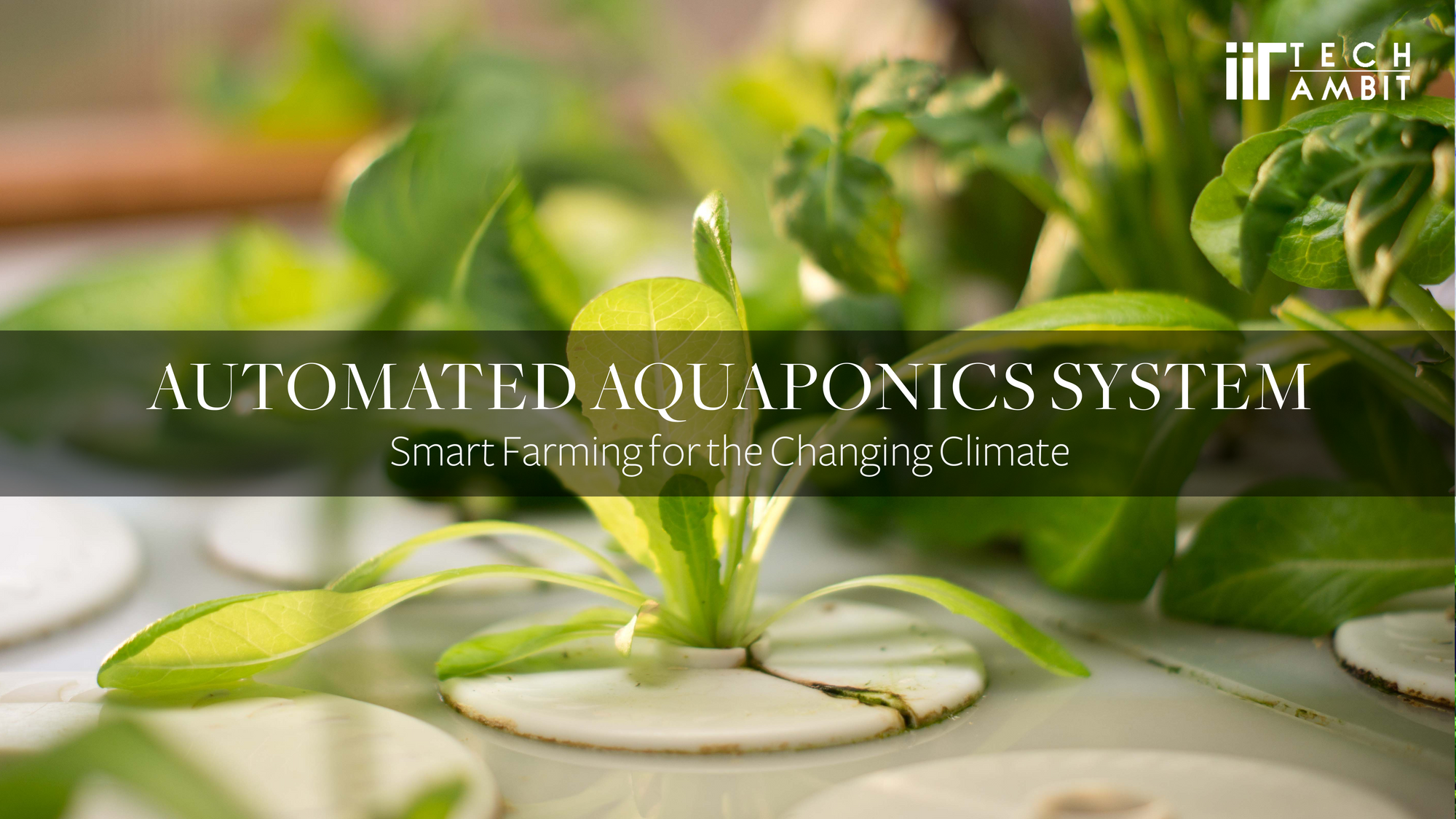The world is facing unprecedented global challenges that affect the sustainability of food and agriculture systems, and thus the livelihoods of millions of farmers worldwide. The 2030 Agenda for Sustainable Development was adopted in a world where food insecurity and hunger present an enormous global challenge. This challenge poses severe threats to achieving the right to adequate food and the fundamental right of everyone to be free from hunger. More food will be needed to feed a growing population and, to meet sustainability goals, the bulk of this increase must come from a shift toward local small-scale farmers and food systems.
The Food and Agricultural Organisation (FAO) of the United Nations believes that innovation, in general, and particularly in agriculture, is the central driving force for achieving a world free from hunger and malnutrition thus attaining the Sustainable Development Goals.
Prof. Aditya Bandopadhyay and students Himanshu Raj Khandelwal, Hemant Kumar Chaudhary and Ankush Roy at IIT Kharagpur have developed a backyard automated aquaponics system that combines aquaculture and soil-less farming--hydroponics. This project is under the M N Faruqui Innovation Centre (MNFIC) and is being converted into a startup.

In this age of consumption centric booming Indian population which is only expected to increase over the years and coupled with the problems of climate change, food safety will be a central issue. With the increase in lifestyle diseases there also has been some push towards organic food. However, the uncertainties in crop yield due to changing climate and deteriorating soil due to the use of inorganic fertilizers and pesticides, means farmers' income has taken a toll.
Thus there arises a need for predictable, assured and organic crop production, which will benefit not only the farmers but also the consumers. Such a system can be developed using the agricultural technique of aquaponics which is built on the symbiotic relationship between plants and fish. The farmer can earn from both the fish and the crops, and it's entirely organic.
What is Aquaponics?
The idea of aquaponics is fascinating, as it is something so simple, and yet there are still so many different ways of going about it, and time required to research these methods. So what is aquaponics, airlift pump or bell siphon? And what is the role of the nitrogen cycle in aquaponics?
It isn’t some new 21st-century technology. The Aztec Indians raised plants on rafts on the surface of lakes before the term aquaponics was known, in approximately 1,400 AD. Another early example can be found in South China, Thailand and Indonesia, where the cultivation and farming of rice in paddy fields in combination with fish are cited as examples of early aquaponics systems.
Water consumption is lower, and plant density is usually at least twice that of soil-based methods.
Aquaculture + Hydroponics → Aquaponics
Aquaculture is a form of agriculture encompassing the propagation, cultivation and marketing of aquatic animals and plants, including fish for food and ornamentation, bait for the fishing industry, sport fish for restocking ponds and lakes, and fish for feed ingredients.
Hydroponics means water working by definition. In practical use, it refers to growing plants in water (soil-less farming) and nutrient solution. A hydroponic culture allows a farmer to grow plants more efficiently and productively with less labour, less water and less fertilizer because the plants are provided with the ideal water and nutrient ratios and optimum conditions for growth.
In aquaponics, raising fish provides a source of nutrients (Urea) for the nitrogen-consuming bacteria, which helps to clean the water where the fish live in, by breaking down these compounds into nitrates. The nutrient-rich water that results from this feed the plants and keeps them healthy. Water consumption is lower, and plant density is usually at least twice that of soil-based methods. As such, the combination of aquaculture and hydroponics help to sustain an environment in which they both can thrive.
The relevance of the project for India, primarily rural India
Statistics show, about 63% of Indian farmers have less than 1 hectare of land, and about 80% have less than 5 acres. This means the productive area for a majority of Indian farmers is too low for any significant income to support the family, as well as grow over the years. No wonder that most of the farmers are laden in debts. It requires farmers to go vertical or multi-layer to increase productivity.
Aquaponics is carried out in a greenhouse/polyhouse which ensures climate control, 90% less water than traditional farming, higher yield density due to the scope of vertical farming, and no pesticides.
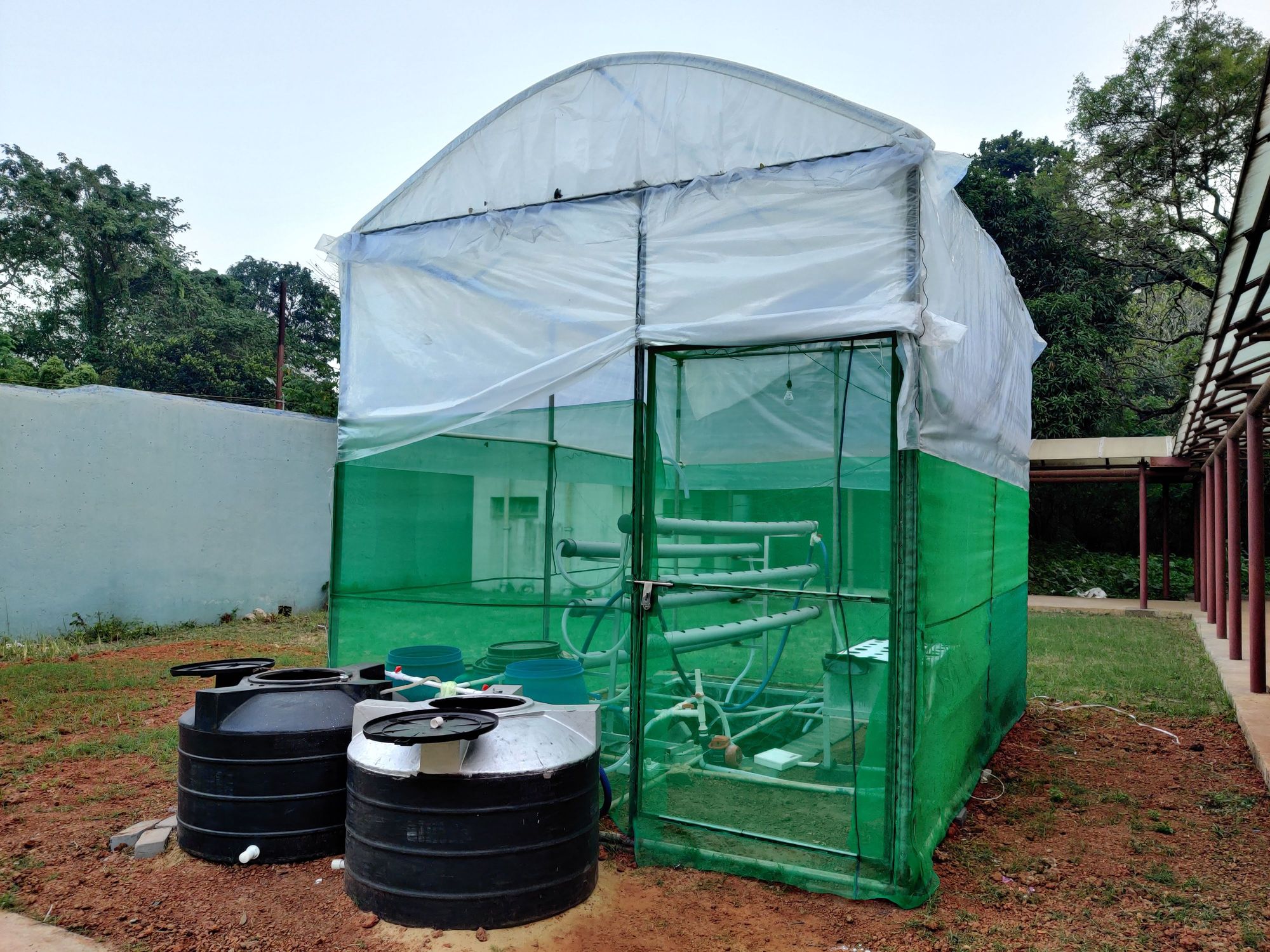
The best part is it's totally organic and highly scalable. One can build a system as small as an aquarium to something as large as an entire farm. This can not only be a good investment for the farmers in rural India but as well for the urban households who can grow fresh food at their homes.
The present state of the art
Currently, only a few systems exist around the world which are reliable, easily scalable and easy to use for the farmers who are less educated. The best techniques available to them is agricultural machinery to carry out different aspects of farming. In the developed world, the farmers are using drones to monitor crops and spray pesticides and even large scale drip irrigation systems. But farms in India are comparably much smaller, rendering these techniques as uneconomical.
The Idea
The aquaponics system, with it's all advantages requires two significant inputs. One is the infrastructure & power and the second one is the constant monitoring of crops which requires substantial knowledge of the domain. Thus the system if at all is to be used within the Indian farmer community should be automated so that the maintenance and domain knowledge required to operate is minimal.
The aquaponics system mainly consists of two components;
- one is the plants that are being grown and the fish. The cycle starts with feeding the fish. The fish excreta is rich in Ammonia, which is then biologically converted to Nitrates by good nitrifying bacteria.
- The nitrate-rich water is then supplied directly to the roots of the plants. Plants take up this nitrate as nutrients and clean up the water. This water is then pumped back to the fish tanks, and the cycle continues.
The constant supply of nutrients ensures at least two times density compared to that of traditional cropping and the greenhouse provides climate control and less loss of water, thus requiring 90% less water than conventional farming.
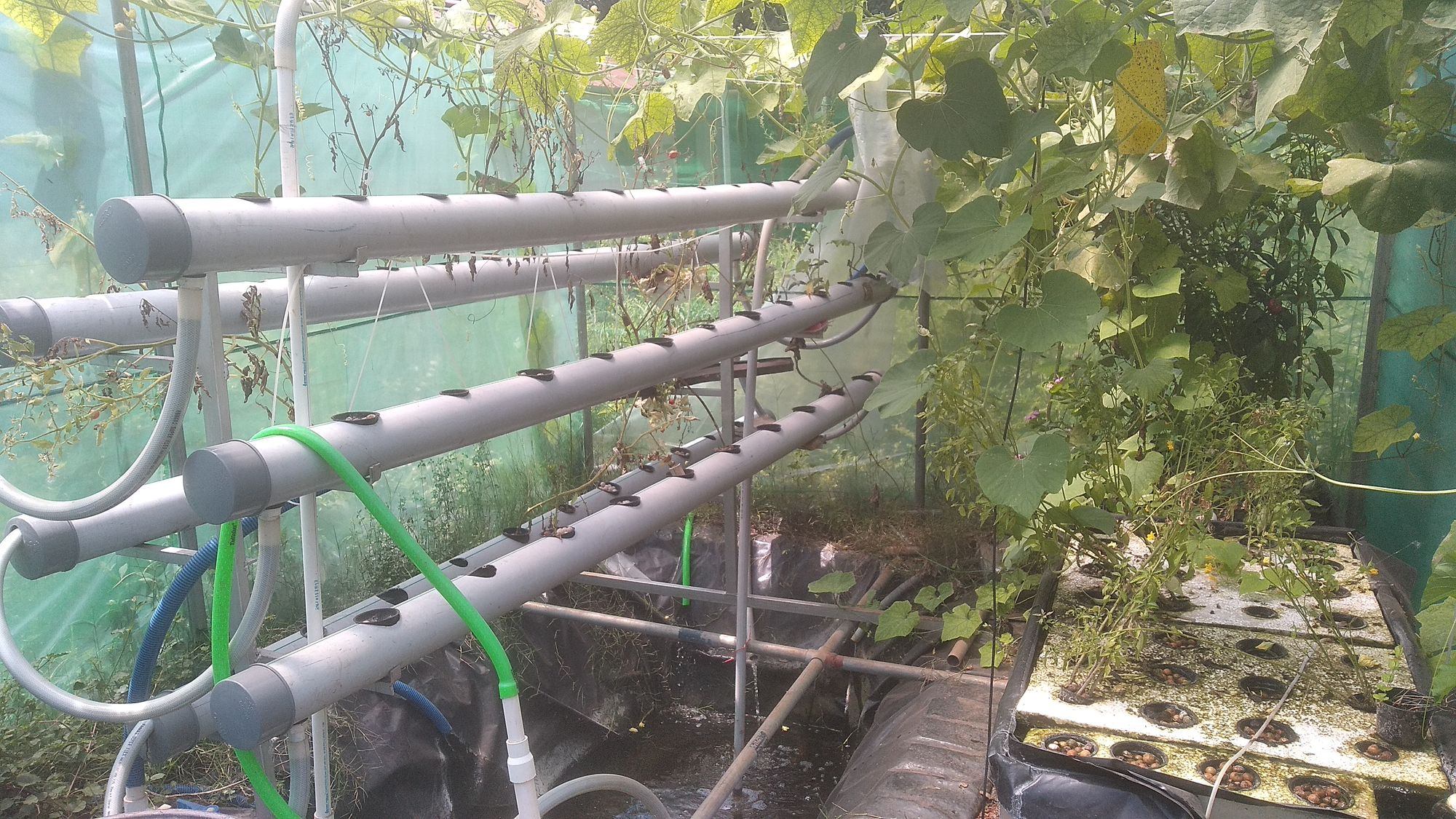
The whole process needs constant monitoring of pH, ammonia concentration, climate control using fans and various sensors and uninterrupted supply of power. The only job of the farmer would be to sow the saplings, feed the fish and collect data for crop health analysis.
The automated system would take power from the sun and if required then from the grid. The power would be used to run the water pumps, the fans, and the sensors installed. The system will be controlled using a centralised micro controller which will collect and process the data from the sensors and take the necessary actions to keep the system running.
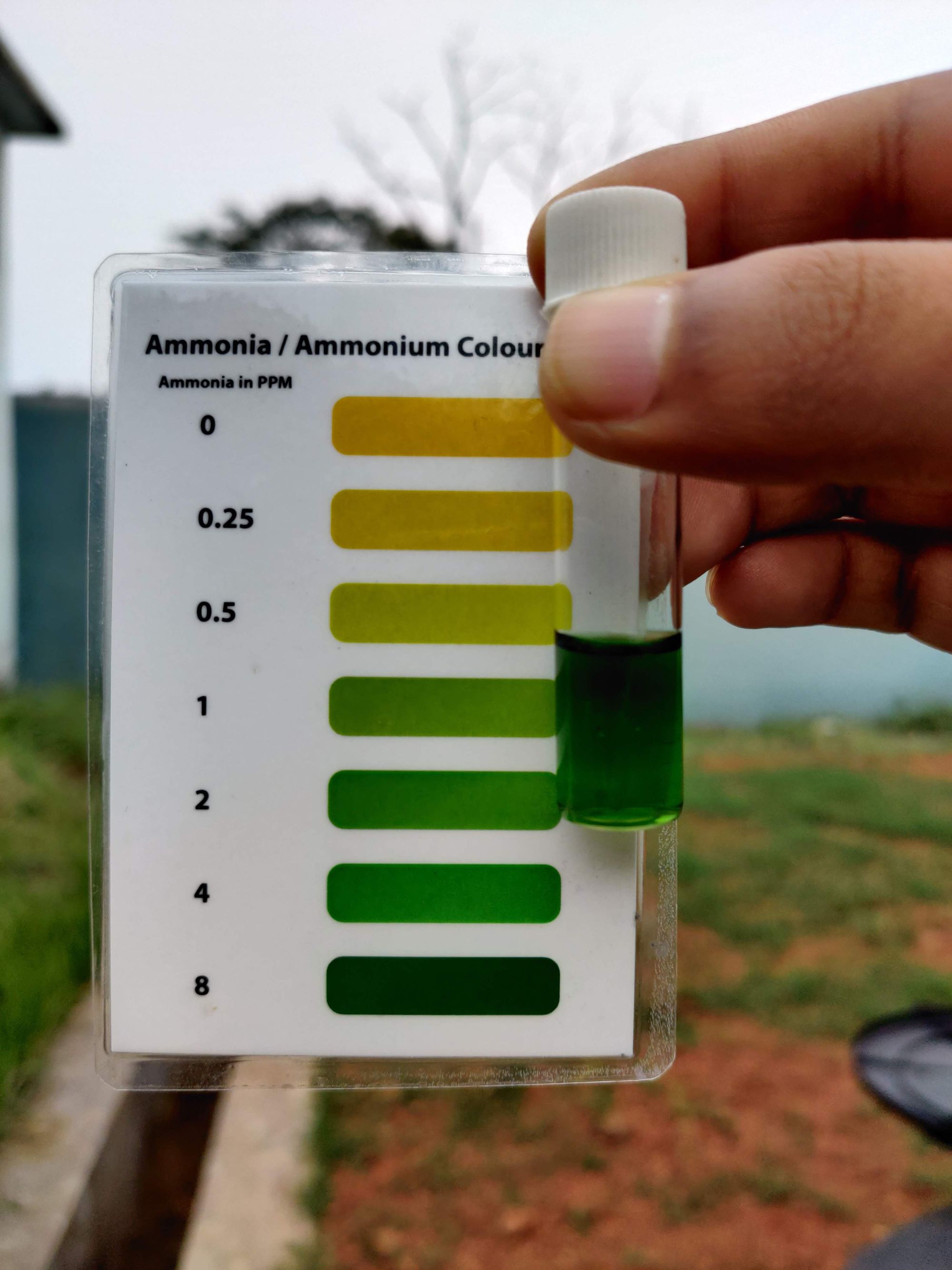
Another advantage of using a closed environment such as a greenhouse for agriculture is vertical farming. Vertical farming acts as a multiplier for increasing productivity per square feet. This would be a boon for Indian farmers since 63% of them own land less than 1 hectare.

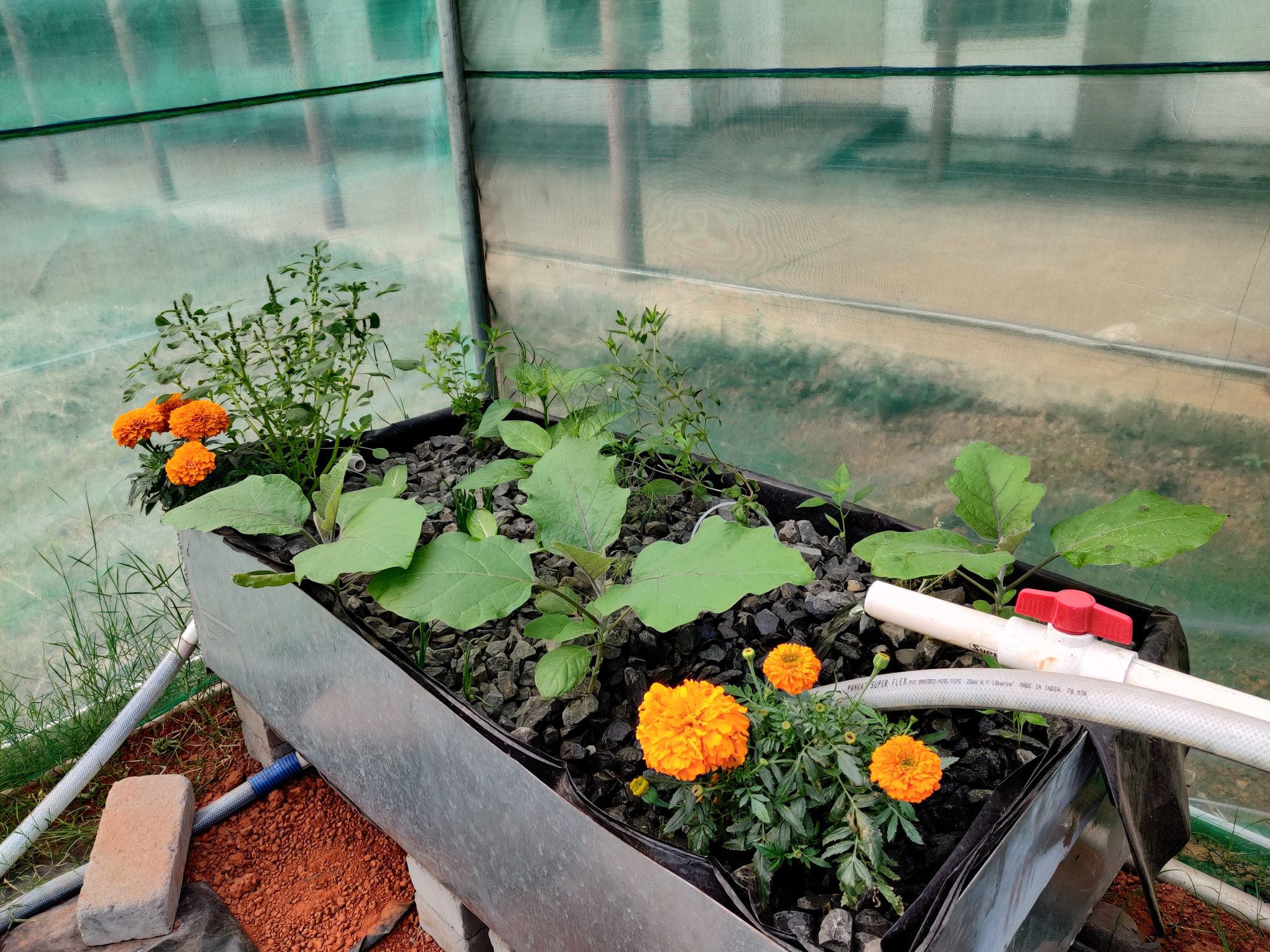
What does aquaponics bring to the table?
- Cost-effective soil-less farming system for modern farmers.
- System customized for rural usage with emphasis on energy optimization.
- Increasing outreach of modern farming technology (requiring 90% less water and increased production per square foot).
- Producing organic, off-season and exotic crops with climate invariance, hence boosting the farmer's income.
- Highly scalable form of agriculture suitable for both indoor and outdoor farming ranging from urban households to large farmlands.
- Water is conserved, and the nutrients are reused. Water usage is extended, and discharge to the environment is reduced.
- Enables continuous and sustainable production.
- The system is simple, reliable and robust.
- Hydroponic component serves as a biofilter.
- Integrated systems require less water quality monitoring than individual systems.

Growing Trend of Indian Sustainable Agriculture Startups
Red Otter Farms
Red Otter Farms is an Indian aquaponics based farming startup located in Kotabagh, a tiny hamlet near Corbett Park, Uttarakhand founded by Anubhav Das and Srishti Mandaar. Spread over 45,000 square feet, their controlled environment aquaponics facility can produce the same yields as nearly 7 acres of open fields. With the use of modern technology and predictive analytics as well as by focusing on sustainable practices including smart use of resources, they produce soft herbs like mint, basil and coriander as well as everyday veggies like tomato and lady’s finger on their aquaponics farm since early 2017.
Barton Breeze
Barton Breeze is a commercial hydroponic farm specialist, using controlled sustainable technology and modern farming techniques, to create highly productive agri-models for the new-age farmer. Founded in 2015, Barton Breeze operates fully-automated hydroponic farms to grow clean and pesticide-free 28 varieties of fruits and vegetables. The startup also sets up such farms for other investors and handholds them initially with know-how and training.
Behind each of their "Smart Farms", there are dedicated R&D teams, plant scientists, microbiologists, mechanical engineers, and design engineers. Barton Breeze collects hundreds of data points at each of its farms to its Data Centre, which allows it to easily alter its indoor precision control for taste, texture, colour, and nutrition. The data also helps the company adjust variables like temperature and humidity to optimize its crop yields. Barton also collects all yield and harvest data into the cloud to calculate sales projections and market trends.
Future Farms
FutureFarms was founded in Chennai focused on powering soil-less agri-technology in 2014. Using IoT, Big Data specialists and data scientists, Future Farms has harnessed the right technology for automated hydroponics making it a pioneer in the Indian hydroponics scene. The company has set up quarter-acre farms for the Adani group in Bhuj, and a farmer in Kotagiri, who cultivates iceberg lettuce for McDonald’s as well. The company sells hydroponic kits and also set up hydroponic units on a turnkey basis. Future Farms now grows 16 crop varieties, classified under English Exotic, Asian Exotic and Indian Exotic, across 15 acres of land spread over ten states across the country.
(With inputs from Himanshu Raj Khandelwal and Hemant Kumar Chaudhary )

